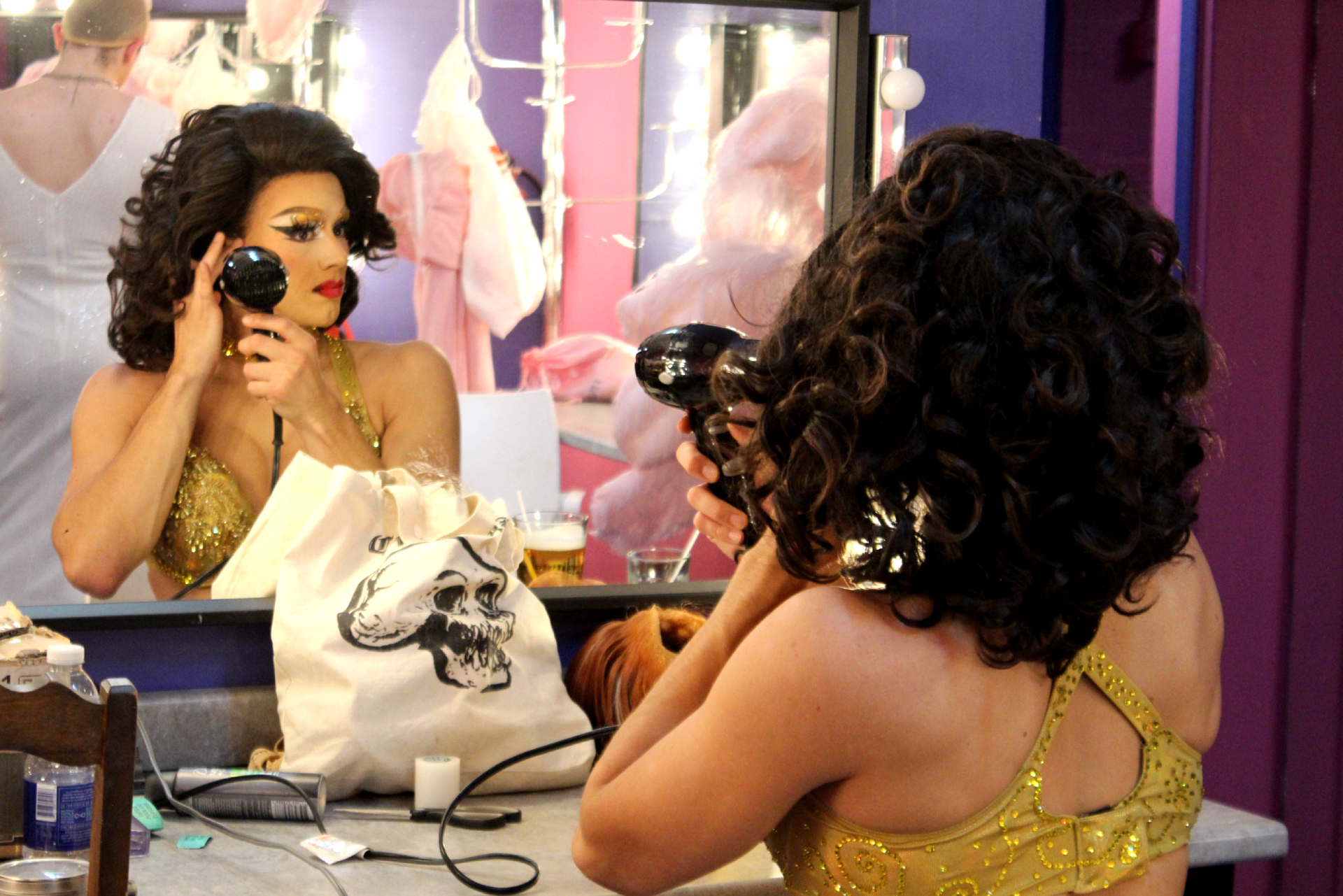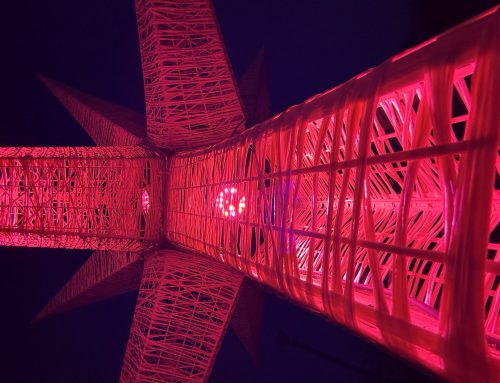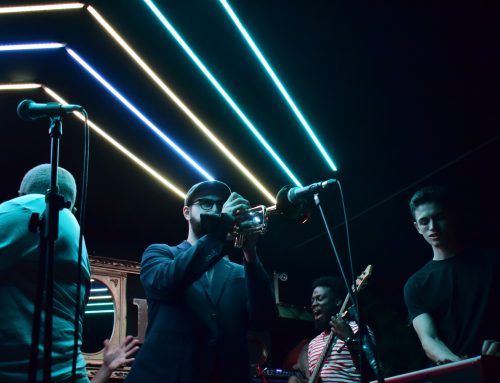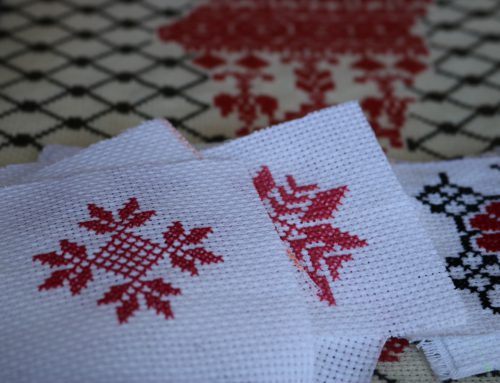BY Emily Palmer & Dylan Buvat
“It’s just disappointing,” says Scarlett Business. “It always feels like we’re moving two steps forward and one step back. To be in a place where the queer community is being targeted as a scapegoat for political gain, it’s just disheartening. It’s saddening.”
Business, a performer with decades of experience in the Montreal and Las Vegas drag scenes, sighs when asked about the recent “drag bans” in several American states. She’s pacing in Terminal 3 of the Las Vegas airport while awaiting a flight back to Montreal.
Business expresses excitement about her return to Canada, since Montreal offers a temporary escape from the political persecution she now feels in the United States.
“Drag artists right now, we’re literally putting on a show for everybody,” says Uma Gahd, a performer whose ‘drag church’ sermon is a staple within the city’s drag scene. “Backstage, we’re all scared. We don’t know what’s going on. We’ve seen the first shoe fall in the [United] States. Now we’re waiting for the other shoe to fall on us.”
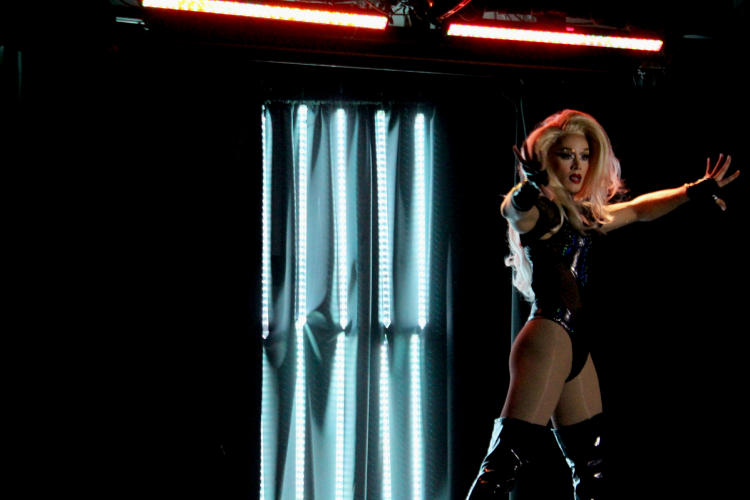
Drag performer Scarlett Business lip syncs to Lady Gaga’s “Born This Way” at Cabaret Mado in Montreal’s gay village. Photo by Emily Palmer.
Gahd details how Tennessee’s “drag ban” has incited discrimination against the international drag community.
“[Montreal drag queens] have been pretty lucky in the way people have accepted us,” says Gahd. “But regularly on Facebook, we [still] get called ‘perverts’ and ‘pedophiles’. That’s just here in Quebec, and it pales in comparison to what’s happening in the rest of the country.”
Gahd is referring to the political opposition encompassing family-oriented events like “drag bingo” or “drag trivia.” Drag-opposers routinely denounce early-childhood exposure to the discipline, with “drag storytime” becoming an international controversy and hot topic in Montreal.
In 2022, over 15 protests targeting storytime events were reported across Canada, with demonstrations often attracting attention from right-wing extremist groups. On March 25, protesters gathered at the Westmount Public Library to challenge a storytime activity hosted by drag artist Barbada de Barbades.
The City of Westmount’s first ever drag story time. Video by Dylan Buvat.
“The negativity surrounding drag storytime is in Canada also,” says Sky Gilbert, a seasoned drag artist and retired professor from the University of Guelph. “They’re saying we’re grooming children by doing drag. [These protests] are just …. going to lead to more homophobia.”
Gilbert has published several works detailing the political intricacies surrounding Canadian drag, and notes a recurring lack of public support for the art in times of persecution. Historically, drag queens have even faced adversity from other LGBTQIA2S+ groups.
“There was a time in the 80s when the [queer community] thought drag queens were a bad look,” says Gilbert. “Drag queens weren’t even allowed in gay bars. When the AIDS [epidemic] happened, drag queens were able to improve their public image because they became fundraisers … but now [what’s happening in the United States] is having an effect here.”
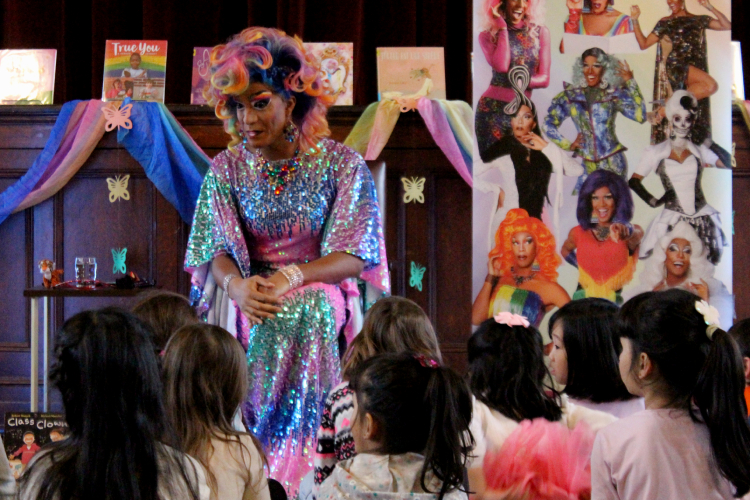
Drag queen Barbada de Barbades hosts a “drag storytime” event in collaboration with Westmount Public Library. Photo by Emily Palmer.
Maria Arcobelli-Sacco, the contact liaison for the Montreal chapter of Parents, Families, and Friends of Lesbians and Gays (PFLAG) explains how the public polarization of drag artistry is nothing new. In fact, she argues that political opposers routinely fixate on drag to avoid addressing broader LGBTQIA2S+ issues.
“Sometimes certain areas are accentuated and [draw] attention so that something else is not thought about,” says Arcobelli-Sacco. “In Quebec … there’s horrid acts that still happen. There’s a lack of visibility, there’s a lack of laws coming into effect. It’s about human rights … [the LGBTQIA2S+ community] has the right to exist.”
Anthony Cayer, a civil litigation lawyer at Blakes, Cassels & Graydon LLP with experience defending members of Montreal’s queer community, highlights how the Canadian Charter of Rights and Freedoms both protects and restricts drag performance in Canada.
“Freedom of speech is … a double-edged sword,” says Cayer. “On the one hand, [it] protects drag performances, [but] it also protects the voices of those that are vehemently against it.”
According to Cayer, the legal definition of “obscenity” is often employed by drag-opposers who falsely correlate drag-performance with acts of indecency. He notes how this perception of drag is discriminatory and oppresses those who don’t conform to conventional displays of gender expression.
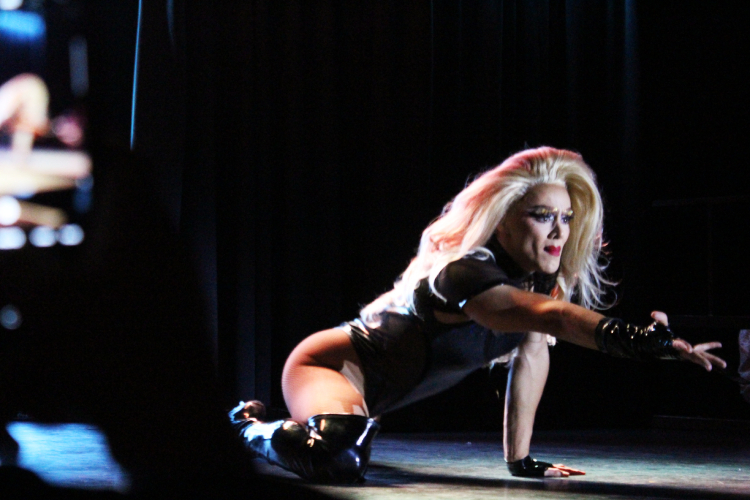
Scarlett Business performing at Cabaret Mado. Business is known for her eccentric acrobatic routines in the Montreal and Las Vegas drag communities. Photo by Emily Palmer.
Although Canadian drag is not subject to the public scrutiny the art receives in the United States, Business notes how Montreal’s scene still presents a unique set of challenges.
“When I’m performing in Montreal, I feel a lot more pressure,” says Business. “The expectation of American drag is that [customers] are paying for an up-close and personal interaction. They want to smell the perfume and feel the texture of your hands. [In Montreal] there’s a stage and the performance is meant to be filled with complex choreography. It’s intense.”
David Myles, an assistant professor at Quebec’s Institut Nationale de la Recherche Scientifique whose research examines Canadian drag history, confirms that performance-art in Montreal is unique from other North American cities.
“There’s a specific Montreal drag culture,” says Myles. “Montreal has a reputation of being more [politically] open. Drag [here] is grounded in its history of burlesque and stand up. In Montreal … there’s a lot more comedy queens. It’s campy. There’s a certain colourfullness.”
Professional drag has thrived in the province for well over a century, with the earliest documented occurrences being in Montreal jazz clubs. This, according to Myles, reflects the city’s affinity to the craft of cabaret: Small, intimate venues hosting extravagant and interactive musical productions.
“There’s been professional drag in Quebec longer than there’s been poutine,” says Myles. “And yet only one of [these things] is part of our official culture.”
A brief history of Montreal’s drag community throughout the last century. Timeline by Emily Palmer.
Myles highlights how the city’s drag-style was inspired by the Club Kids of New York, with the city’s socialites popularizing vibrant and androgynous fashion trends throughout the 1980s.
This attire is now a staple for Montreal comedy queens like Gahd, who says the city’s drag is infused in social commentary.
“My drag has been political from the start,” says Gahd. “When you talk about queer history and [human] rights, drag queens and trans women were doing the big, heavy lifting. They … were instrumental in the events that happened at Stonewall,” notes Gahd, referencing a series of protests led by New York’s gay and queer community in 1969.
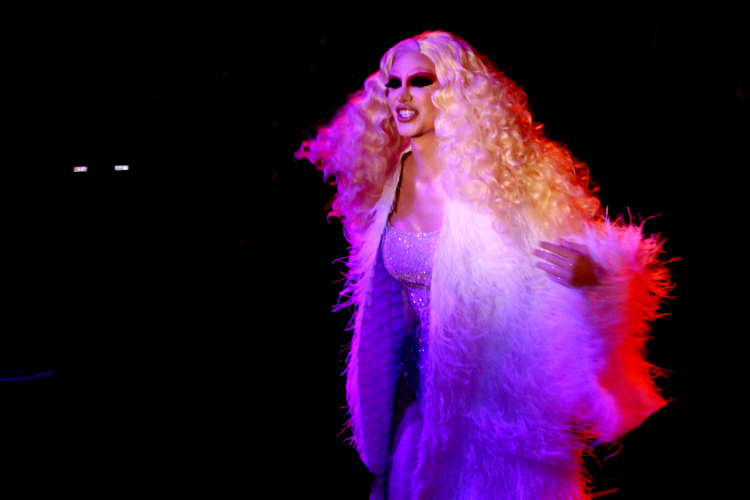
Drag queen Esirena performs at bar Le Cocktail in Montreal’s gay village during disco night hosted by Uma Gahd. Photo by Emily Palmer.
While Canadian drag communities revel in their “distance” from the bans, Gahd stresses how Montreal queens are still subject to harassment and urges the public to combat oppression through advocacy.
“Straight, cis[gendered] people need to be supporting our communities beyond consuming our art,” says Gahd. “Every person with a platform needs to be encouraging people to go out and do the work. And the work is petitioning, promoting events that are inclusive, protesting, writing to representatives, registering friends to vote.”
“These fights will continue to be fought,” echoes Business. “It’s not the first time … it’s not the last time. We just have to continue to broaden our perspectives as these arguments keep coming up. In the end, the more that we separate the less power we have.”
